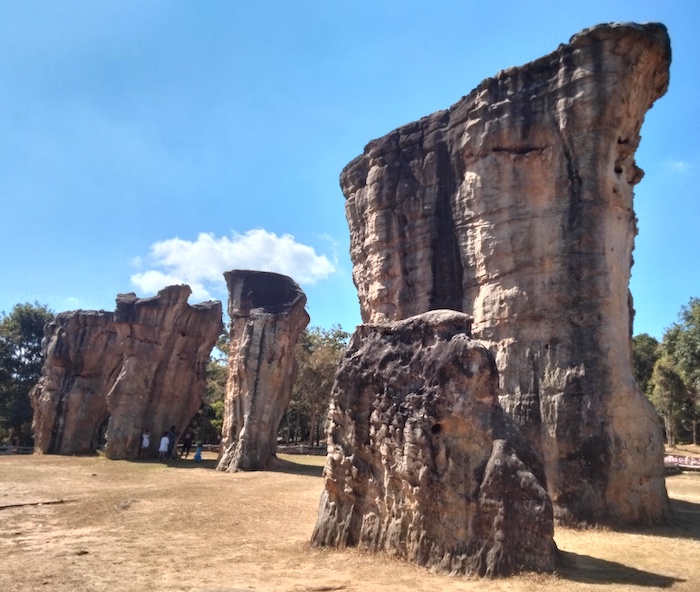A day trip to what is known as Thailand’s Stonehenge, in Chaiyaphum Province 100 kilometres south-west of the Isaan capital, Khon Kaen.
Mo Hin Khao, to give its real name, is a collection of beautiful sandstone rocks, sculptured by Nature.
Mo Hin Khao
The five most distinctive rocks at Stonehenge are known as Sao Hin Ha Ton, and are up to 12 metres tall.
- The main feature of Thailand’s Stonehenge.
Dong Hin
A second group of strange-shaped rocks known as Dong Hin, is located 500 metres away. Some of the shapes imagined are a chedi, a turtle shell and a boot.
- Rocks at Dong Hin.
The carpark at Stonehenge doesn’t disappoint – there is the obligatory sprinkling of vendors totally out of sync with the surroundings. But after visiting countless Thai attractions one realises that, like it or not, whether you think they detract from the overall experience or not, these pop up outlets selling coffee, food and merch ARE just as much a part of the real Thailand as the tourist destination they are supporting and being supported by.
- For some reason Thai groundsmen think that artificial inclusions will enhance a natural feature.
The Phu Laenkha National Park is adjacent. Like the great majority of national parks in Thailand it has a dual pricing policy for entry into an attraction that, for the most part, doesn’t stack up to the standards experienced in the home countries of the visitors who are being overcharged.
- Farangs are charged five times as much as locals – even if they are locals.
The only exculpatory factor in this overt position is the equally plainly advertised dual pricing. Suck it up or spend your money elsewhere. Fair enough – no-one is forcing anyone to enter the facility.
Some of these fee-extracting points are run by third party, private enterprise operations (read the signage fine print) that do not make clear what association they have with the organisation that ostensibly administers National Parks.
This a 250 kilometre return Day Trip with the opportunity to see other highlights along the way.
To see another 15 suggestions for Day Trips and Weekend Trips ex Khon Kaen (non commercial) that are ‘way different’ from your usual Wat and Food Tour, follow this link.
© Kim Epton 2024
406 words, seven photographs
Feel free to use any part of this document but please do the right thing and give attribution to adventures.net.au. It will enhance the SEO of your website/blog and Adventures.
See Terms of Use.







